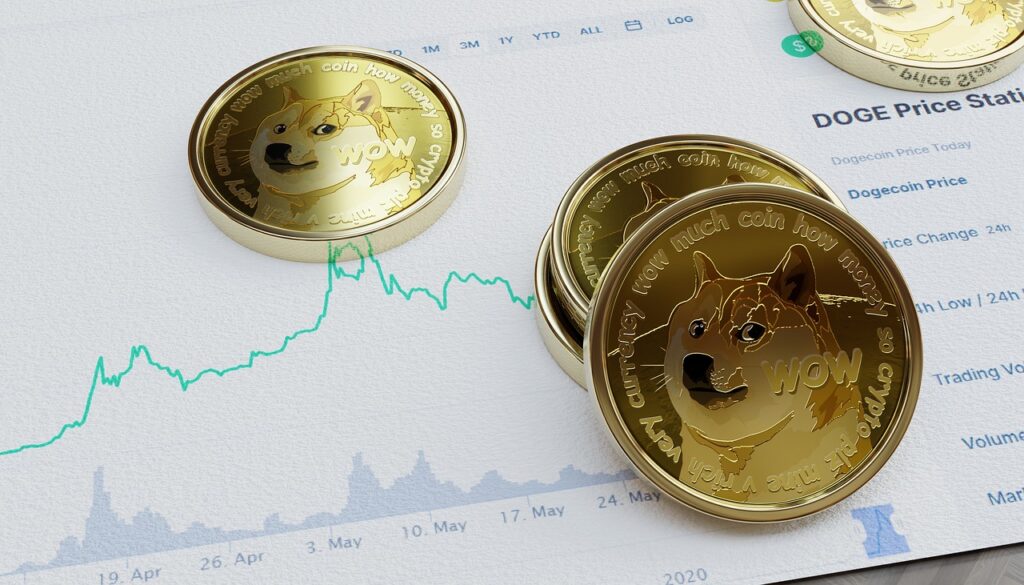
Introduction
Web3 technology has rapidly transformed the digital economy, reshaping how businesses manage digital assets and interact with decentralized applications. Despite its foundation as an experimental integration for developing blockchain applications, it has quickly gained traction as a mainstream requirement across fintech, e-commerce, and cross-border payments. At the core of this shift lies the digital wallet, a critical entry point into Web3 and a foundation for user engagement in the decentralized economy.
Building Web3 infrastructure is a challenging feat that can drain business resources and slow innovation. This is where Wallet-as-a-Service (WaaS) comes in. Instead of spending years on development, companies can embed wallets directly into their platforms, accelerating time-to-market and focusing on user experience. Imagine a fintech building a remittance app. If they are to build infrastructure internally, it could take months of development and compliance checks. With WaaS, the company can go live in weeks, integrate wallets instantly, and enable customers to receive stablecoins immediately while focusing on growth and user experience.
This guide provides a clear breakdown of Wallet-as-a-Service (WaaS) for fintech teams and product leaders. We’ll cover what WaaS is, its inner workings, key features to prioritise, and how to choose between building in-house vs. buying WaaS solutions. By the end, you’ll see why WaaS is becoming the fastest path for fintechs to innovation and scaling in the Web3 economy.
Why Wallets Are the Fintech Engine Room
In today’s fast-moving digital economy, fintechs are capitalizing on digital wallets to drive innovation. Whether building a super app, mobile payment platform, neobank, or scaling cross-border settlements, the wallet is the central point for connecting customers to financial services. Similar to how an engine powers the car, the digital wallet powers the fintech ecosystem.
Here’s why wallets are essential for growth:
- Primary Customer Gateway – A digital wallet is often the first point of contact between users and a fintech brand. From storing money and digital assets to enabling mobile payments, wallets create daily engagement opportunities.
- Platform for financial products – A strong wallet doesn’t just process payments; it supports savings and even cryptocurrency, making it the backbone of product diversification in fintech.
- Data and user insights – Every transfer, top-up, or bill payment provides valuable transaction data. Fintech teams can use this data to personalize services, improve fraud detection, and drive customer loyalty.
- Trust and brand reputation – Security and reliability are non-negotiable. A digital wallet that ensures compliance and seamless transactions builds customer trust, which is arguably the most valuable asset in financial services.
Wallets are fundamental in advancing user retention, revenue growth, and product development. A lackluster digital wallet strategy exposes fintechs to the risk of building apps that look good but have limited scalability.

Understanding the Wallet-as-a-Service and How It Works
A Wallet-as-a-Service (WaaS) platform is essentially a cloud-based solution for managing digital wallets and crypto assets. It eliminates the technical complexity of building and maintaining wallet infrastructure in-house, including elements like wallet creation, key management, security, and compliance. WaaS provides an easy-to-use, scalable, and regulation-ready solution for storing, sending, and receiving digital assets.
Here’s how it works:
Step 1: Integration
The journey begins with integrating the provider’s APIs or SDKs into existing systems. This ensures compatibility with existing infrastructure while establishing communication protocols. A smooth integration allows instant embedding of wallet functionality without rewriting the tech stack.
Step 2: Customisation
Unlike ready-made tools, WaaS platforms are designed for flexibility. Teams can customize the wallet interface to reflect their brand identity by tweaking UI design, selecting custodial vs. non-custodial wallet features, and even localising content for regional usage.
Step 3: Implementation of Security Measures
WaaS systems implement enterprise-grade protections such as end-to-end data encryption, two-factor authentication, hardware security modules (HSMs), and regular third-party audits. Some even use multi-party computation (MPC) to eliminate single points of failure in key management.
Step 4: Regulatory Compliance
A major advantage of WaaS frameworks is that they incorporate compliance with evolving financial regulations covering KYC/AML checks, licensing, and transaction monitoring. This drastically reduces regulatory overhead while ensuring global readiness.
Step 5: Wallet Funding
Once live, users can fund wallets via bank transfers, cards, mobile money, or blockchain networks. The platform abstracts away the complexity of reconciling and settling transactions across different rails.
Step 6: Processing Transactions
Users can now send money, pay bills, or transfer assets. The WaaS handles the process of verifying identities, ensuring liquidity, and completing transactions quickly and securely.
Step 7: Analytics and Reporting
Most Wallet-as-a-Service infrastructures include dashboards and APIs for tracking transaction volumes, user behaviour, fraud patterns, and other key insights that help teams make data-driven decisions.
Step 8: Updates and Maintenance
Finally, the provider manages ongoing upgrades, from deploying security patches to rolling out new features like cross-chain support. This keeps financial products future-proof without adding engineering strain.
YoguPay WaaS turns complex wallet infrastructure into a plug-and-play service that enables companies to innovate on the front end, while it manages the complex, regulated, and security-intensive back end.
Core Features That Set WaaS Apart
Although ready-made and custom digital wallet solutions are quite dominant, WaaS blends unique features that raise the standards of managing digital assets. From scalability, to security and compliance, fintech teams are offered an array of tools in one platform that they can use to move fast without compromising trust.
Notable features to evaluate include:
- Centralized Wallet Management
WaaS provides a single dashboard for managing wallets across currencies and regions, removing the need for fragmented systems.
- Multi-Currency and Cross-Border Support
The platform supports both fiat and crypto simultaneously, with real-time conversions. Stablecoin rails help offset volatility, proving crucial for fintechs scaling internationally.
- Business-Ready Security
From robust encryption to multi-signature protocols, WaaS providers deploy advanced safeguards for digital assets. Many also use HSMs and MPC to protect private keys from breaches.
- Simplified integration
APIs and SDKs allow fintechs to embed wallets quickly, cutting down technical debt and speeding up product launches.
- Automated Key Management
Key creation, rotation, and backup are automated with multi-layered protection, reducing operational risk and freeing internal teams.
- Compliance Support
Regulations like KYC, AML, and CFT are built into the infrastructure, ensuring seamless expansion into new markets without regulatory delays.
- Real-Time Analytics
Dashboards track transaction flows, engagement, and growth metrics, arming teams with actionable insights.
- Customer Support
Top providers back WaaS offerings with strong support for quick resolution of issues and maintaining trust with end-users.

Build vs. Buy: Which Wallet Management Model Wins?
The most challenging stage for most fintechs is deciding whether to build wallet infrastructure in-house or buy into a Wallet-as-a-Service (WaaS) platform. Numerous factors determine the ideal solution for a business, but they can be narrowed down to how fast they can scale, risk exposure, and where the engineering energy is needed most.
Here is a table comparing the two options to help you pick the best:
| Factor | Build (In-House Wallet Management) | Buy (Wallet-as-a-Service) |
| Time to Market | Requires months of development, testing, and compliance checks. | Short launch in weeks with pre-built infrastructure and compliance guardrails. |
| Cost Structure | High upfront investment on development, security, infrastructure, and audits. | Lower upfront cost, subscription, or usage-based pricing.Predictable operating expenses but long-term dependency on the provider. |
| Customization | Full control over features, UX, and integrations. Can tailor wallet experience to unique business needs. | Limited to provider’s APIs/SDKs, though top providers offer flexibility.Trade-off between speed and control. |
| Security & Compliance | Responsibility lies fully on the team to handle encryption, key management, audits, and evolving regulations. | The provider covers security standards, compliance frameworks, and ongoing regulatory updates. |
| Scalability | Needs robust infrastructure planning. Scaling across geographies, chains, or user bases requires additional resources. | Designed for scale – multi-chain, multi-region, and large user capacity built in. |
| Maintenance & Upgrades | Continuous updates are required to fix bugs, meet new compliance rules, and improve features. | Automatic upgrades and new features are handled by the provider. Less maintenance overhead for internal teams. |
| Talent Requirement | Requires hiring blockchain engineers, compliance officers, and security experts. High HR overhead. | Minimal internal team needed. Focus shifts to product experience and growth rather than infrastructure. |
| Risk Profile | Higher technical, compliance, and operational risk. But also higher control and independence. | Lower operational risk. Vendor dependency introduces third-party risk and possible vendor lock-in. |
In practice, the ideal option depends on stage and strategy, but for most fintechs, WaaS delivers the clearest path to growth. It reduces burn, eliminates regulatory guesswork, and lets teams focus on building market-ready products.
Even enterprises with the muscle to build often find WaaS a faster, more efficient launchpad before scaling into hybrid or proprietary solutions. In a market where speed and trust decide winners, buying isn’t just convenient, it’s the smarter option with long-term value.
Key Management and Security in WaaS
In fintech, trust is currency, and nothing erodes it faster than weak security. That’s why key management sits at the core of any Wallet-as-a-Service (WaaS) offering. A wallet isn’t just a digital pouch for value; instead, it’s a vault whose locks are cryptographic keys. How those keys are generated, stored, and accessed defines whether a platform is resilient or a breach waiting to happen.
The challenge of keys is that they’re both powerful and fragile. If you lose a private key, the funds are irretrievable, and if you expose it, attackers can drain wallets instantly. Building in-house means shouldering the responsibility of secure key storage, encryption protocols, and adherence to standards like PCI DSS or ISO 27001. That requires specialized cryptography expertise, 24/7 monitoring, and costly infrastructure hardening.
WaaS providers take this burden off your shoulders by embedding robust key management systems (KMS) into their platforms. Many use hardware security modules (HSMs) or secure enclaves, ensuring private keys never leave tamper-proof environments. Advanced models also support multi-party computation (MPC), splitting keys across multiple servers to eliminate any single point of compromise.,
Since security is never set and done, teams must evaluate providers for audit trails, regulatory certifications, incident response protocols, and encryption transparency. The best WaaS partners treat security as an operating philosophy and not as another cool feature.
A WaaS platform like YoguPay’s considers security as a foundation and not an option. It treats customer trust like a valuable asset, creating a safe environment for digital asset storage, exchange, and even cross-border transactions.

Wallet-as-a-Service Pitfalls and How to Avoid Them
WaaS promises speed, scalability, and regulatory peace of mind, but like any outsourced infrastructure, it comes with trade-offs. Recognizing the pitfalls early can mean the difference between a smooth launch and a costly pivot.
Vendor Lock-In
Relying too heavily on a provider can box you into their pricing model, feature roadmap, and technical limits. If they raise fees or stall innovation, you’re stuck.
Solution: choose providers with open APIs, strong documentation, and clear data portability policies.
Compliance Gaps
Not all WaaS platforms are equally compliant across regions. Expanding into new markets may reveal gaps in licensing or KYC/AML frameworks.,
Solution: Vet providers against the markets and regulatory territories you plan to enter, not just where you are today.
Hidden Costs
The headline price may look attractive, but transaction fees, integration costs, and premium features can add up fast.
Solution: model different transaction volumes and stress-test pricing tiers before signing contracts.
Security Assumptions
Some teams assume a provider’s security means they’re fully covered. In reality, shared responsibility still applies meaning your side of the integration can be just as vulnerable.
Solution: Audit both your own code and the provider’s certifications.
A WaaS partner like YoguPay lets fintech teams sidestep these common pitfalls, shifting their focus to building products that satisfy consumer needs, scaling across geographies, and innovating faster. WaaS becomes not just a service, but a strategic advantage.
Choosing the Right WaaS Provider
Selecting the right Wallet-as-a-Service (WaaS) vendor isn’t about chasing flashy features; it’s about securing long-term value. A good partner should integrate seamlessly into your current systems while preparing you for tomorrow’s growth.
Use this checklist to find your next WaaS provider:
WaaS Foundation
Start with compatibility. The provider’s technology should align with your existing infrastructure and be adaptable enough to support both traditional rails and emerging blockchain networks if needed. Once compatibility is guaranteed, check for integration capabilities.
Look for a provider offering comprehensive APIs, SDKs, and documentation to reduce engineering overhead and speed time-to-market.
Finally, scalability is non-negotiable. The WaaS partner must operate on infrastructure resilient enough to handle surges in users and transaction volumes without compromising performance.
Future Breadth
Consider the wallet types you’ll need. Whether you prefer custodial wallets for simplicity or non-custodial/hybrid options for user control, security layers should be advanced, with features like multi-factor authentication, biometric verification, or hardware wallet integration.
If you’re planning to expand into Web3, check for value-adds such as stablecoin wallets that can enrich the user experience and future-proof your product.
Service and Security
Choose a provider with a proven track record of reliability, consistent uptime, and strong customer satisfaction. Risk mitigation and regulatory obedience should be at operationally sound levels, with robust encryption, secure key management, and independent audits as standard expectations.
Security should also complement support. A responsive, knowledgeable support team reduces downtime and helps you adapt quickly when issues arise.
FCA and FINTRAC-approved providers like YoguPay meet these criteria, acting as both a technical foundation and a growth partner for fintech teams expanding across geographies and asset classes.
Real-World Use Cases of WaaS Solutions
The best way to understand Wallet-as-a-Service (WaaS) is to see it in action. Across fintech, startups, and enterprises are already using WaaS to move faster, cut costs, and unlock new revenue streams.
Cross-Border Payments
For businesses in emerging markets, cross-border payments remain a high-friction challenge. WaaS reduces settlement time from days to near-instant using digital assets and stablecoins. By plugging into a WaaS platform, fintechs can create multi-currency wallets that bypass traditional correspondent banking.
A remittance company, for instance, could offer overseas workers the ability to send funds in local currency, settle in a regulated stablecoin, and pay out in the recipient’s currency with less cost and delay.
For example, YoguPay’s cross-border payments on the WaaS platform leverage stablecoins as a settlement layer between fiat currencies. When a user initiates a transfer, funds are tokenized into a dollar-backed stablecoin within the wallet.
At the destination, the stablecoin is automatically converted back into local currency for the recipient. This allows currency movement across borders, bypassing slow bank payments and reducing FX volatility.
WaaS not only accelerates settlement, but also maximises transparency, auditability and oversight at a predictable cost.
Financial Services and Neobanking
Wallet-as-a-Service positions itself as the backbone of challenger banks and fintechs. Instead of spending years building compliance layers and account systems, startups can go live in weeks.
For example, neobanks can spin up virtual account systems that let customers send, receive, and categorize money seamlessly. Some providers even integrate CBDC (Central Bank Digital Currency) pilots, giving fintechs a future-proof way to adapt once regulatory frameworks are implemented.
This means that fintech teams can optimize UI/UX design that users interact with daily while still relying on WaaS for regional compliance, AML, and ledger management in the background.

The Future of WaaS in a Tokenised Economy
For enterprises in financial technology, the rise of the tokenised economy isn’t abstract. It’s a roadmap for what wallets must handle next. Tokens representing money, assets, or even regulated securities will need a secure home. That home is the wallet, and WaaS will be the infrastructure making it possible.
What fintech teams should expect:
- Multi-asset support: Tomorrow’s wallets won’t be limited to holding fiat balances. They’ll need to support stablecoins for cross-border transfers, tokenised securities for new investment products, and loyalty or reward tokens that drive customer engagement. For fintechs and PSPs, flexibility is critical since clients increasingly expect one wallet that can seamlessly manage multiple asset types without friction.
- Programmable finance: As smart contracts automate payments, settlements, and lending, WaaS providers must offer seamless integration with Web3 protocols to support fintechs in building services without reinventing blockchain logic.
- Cross-chain interoperability: WaaS partners who bridge multiple blockchains will help fintechs deliver smooth, borderless experiences to users who don’t like silos.
Opportunities for fintechs:
- New products: From tokenised loyalty programs to fractionalised investment platforms, WaaS lowers the entry barrier for launching token-first services.
- Faster scaling: Teams can use WaaS infrastructure to expand across geographies and asset classes without taking on all regulatory and security overhead themselves.
- Customer trust: By outsourcing token security and regulatory foundations to trusted providers, fintechs can focus on building products and services that win the market.
Conclusion: WaaS as the Quiet Powerhouse of Fintech
Wallet-as-a-Service isn’t just another fintech buzzword. It’s the infrastructure quietly powering the next wave of digital payments. For product teams, it unlocks speed, flexibility, and security without the burden of building from scratch. Whether you’re a startup racing to launch or an established player modernizing your stack, WaaS turns the wallet problem into a growth opportunity.
The choice isn’t about ‘if’ you should integrate wallets, but ‘how fast’ you can do it with the right partner. In a fintech world where time-to-market and trust define winners, WaaS is the backstage engine that makes seamless, secure, and scalable money movement possible.

How Yogupay Can Help You Move Faster
In fintech, speed combines as a competitive edge and a survival tool. YoguPay’s Wallet-as-a-Service is built to help teams accelerate their product launches, reduce operational drag, and scale securely.
With Yogupay as your provider you can expect;
- Plug-and-play APIs to embed secure wallets in weeks for faster time-to-market.
- Built-in KYC, AML and CFT compliance guardrails so your business stays regulator-ready as it expands.
- Smooth on/off-ramp solutions for multiple currencies with real-time conversions to reduce volatility risks.
- Multi-layer defense systems like automated key management and robust encryption protocols to maintain user trust.
- Real-time analytics dashboards to track user activity, transaction volumes, and growth metrics, for data-driven decision making.
- Hands-on support for integration and customer wallet queries to sustain continuity of operations.
Our cutting-edge Wallet-as-a-Service streamlines your operations with powerful capabilities:
- Instant Wallet Creation – Generate wallet addresses on demand, tailored to your business needs.
-
- Seamless Stablecoin Acceptance – Receive stablecoins with instant settlement, making funds immediately available.
- Secure Withdrawals – Send funds to external wallet addresses effortlessly, backed by enterprise-grade security.
- KYT Screening – Automatically scan wallet addresses to detect and block suspicious or high-risk transactions before they impact your business.
Stay ahead of the competition with YoguPay’s Wallet-as-a-Service. Launch secure, compliant wallets and scale faster with confidence. Visit www.yogupay.com or request a demo today to see how quickly your business can grow.